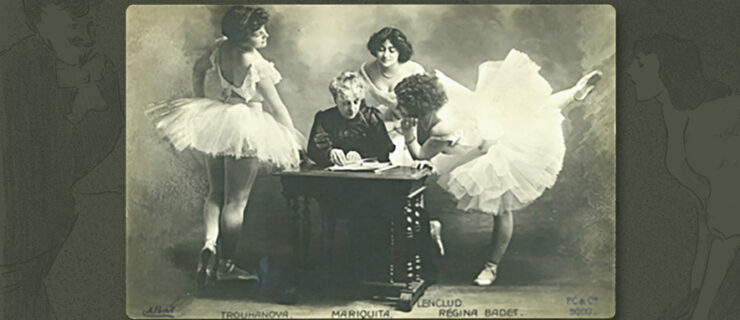Pointe Exclusive: Watch an Excerpt from Wendy Whelan’s Doc Restless Creature
As dancers, we know we have a short window of time to achieve as much as we can before our bodies start working against us—and then what? For former New York City Ballet star Wendy Whelan, the thought of transitioning out of ballet after a 30-year career was particularly hard to grasp. Remarkably honest and down-to-earth, Whelan allowed cameras to capture this incredibly vulnerable moment in her career; the resulting documentary, Restless Creature, opens in New York City on May 24, L.A. on June 9, and will have a wider release this summer. In it, we watch her grapple with a debilitating hip injury and her looming retirement before embracing a new career in contemporary dance.
“Process is my thing,” Whelan told me in a recent interview. “I could live in process and have no performances. I like to constantly be churning in something—hence the non-desire to retire.” In this exclusive clip, we see her doing just that with one of her biggest collaborators, Christopher Wheeldon, and her partner Tyler Angle in preparation for her final performance with NYCB.
Below are edited excerpts from our interview about Restless Creature.
You had cameras follow you for 16 months. At a certain point did you stop noticing them?
Kind of. I remember they were shooting my retirement day, and I said, “I don’t want to know that you’re here. I need you to wear black and be in the wings and out of my sight.” And they were like, “Don’t worry, we will.” And I’m warming up for my first ballet, and they’re 10 feet away and I’m like, “I can see you!” [laughs] But they were really good about trying to meet what I needed in a very sensitive situation.
Is it strange to watch the documentary and relive everything
?
It is kinda weird. I feel like a different person, like I’m watching a much younger version of myself. I see the struggle that I was going through and how strong it was. I feel sad for that Wendy. But I’m proud of her.
You also describe how hard it was to feel frozen out by artistic staff at NYCB, knowing it was a signal to retire.
It’s a horrible feeling—this idea of shame. You feel ashamed for being there, after all the years of blood, sweat and tears. But I definitely don’t want anyone to look bad upon Peter Martins—this is his job. He has to do it for the life of the art, and I don’t envy him for it. That’s partly why I hesitate to go back into the ballet world, especially in a leadership position. That aspect of being in charge may not be something I want to experience.
What was the hardest part to watch?
There are two people in the film who’ve passed away, both at 46: my sister-in-law, who just died in February, and Albert Evans. So to see them and know how much of a family they were and to have them be gone is really profound. It puts a lot of perspective on things. That’s where my heart has come to: That life is more important than anything else, and the relationships from my ballet career are what I will miss the most.
At one point in the movie you say that your ballet career has been like living in a fantasy world. Now that you’ve moved on but are still dancing, do you still feel like you’re in a fantasy world?
No, it’s very different. But it’s a different kind of fantasy world! I’m a very happy person. I’m working with wonderful people that I love that love me back, and that makes a difference. But I think you can create your own happiness, and I think that’s what I’m doing or trying to do. I think we’re all in charge of that. Then if you get rocked by something and you get a little bit sad and angry and confused, you realize that it’s your responsibility to pull yourself up.
What is your advice for ballet dancers going through a career transition?
Make it a creative act. Use your creativity within it. It’s, again, process. I liked the creative act of transforming myself, and I’m still doing that. And that’s part of what makes me happy: to still be in development. All those hours that you put into this, with discipline and focus, are like money in the bank. You can use it for everything you do, whether you dance or not.





